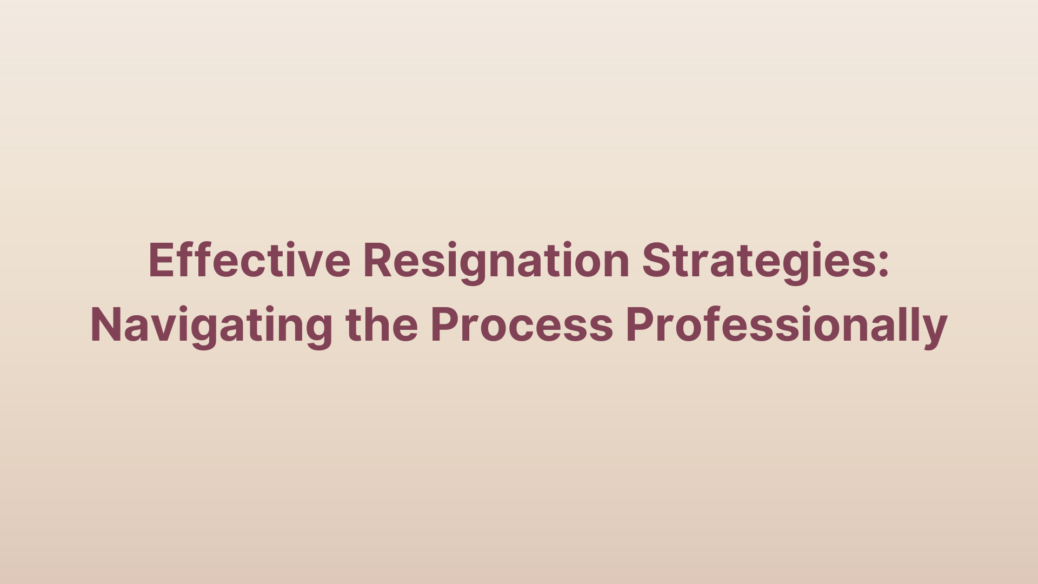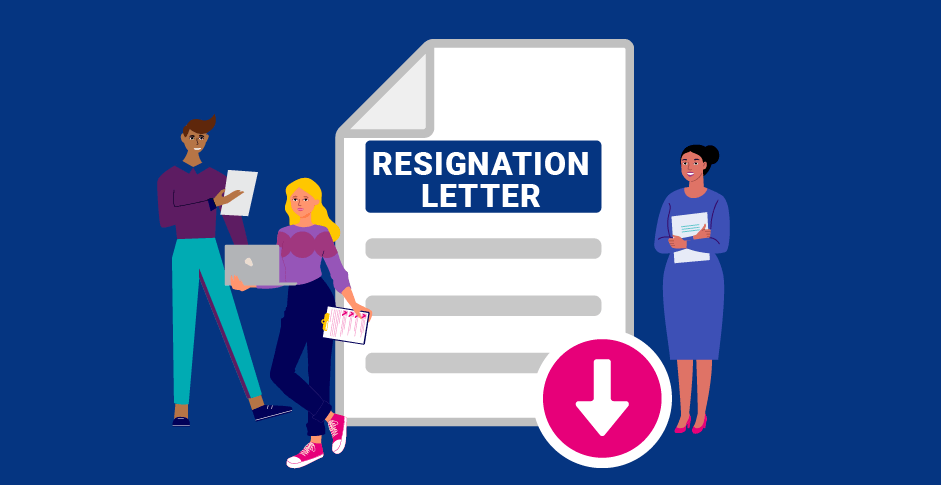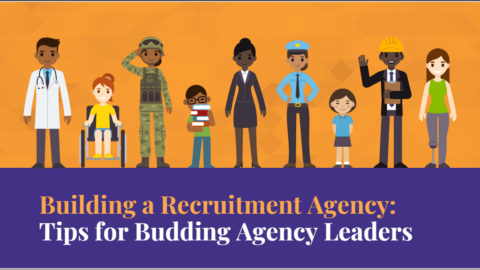Effective Resignation Strategies: Navigating the Process Professionally
Resigning graciously is an important step in maintaining professional ties and making a seamless transition when leaving a job. Several factors must be considered when departing, including a resignation letter writing and good transition planning as Effective Resignation Strategies. In this essay, we will look at the key tactics and stages involved in resigning from a job professionally, highlighting the necessity of maintaining connections, expressing thanks, and ensuring a smooth transition of duties.
Table of Contents
Writing a Resignation Letter
A well-written letter of resignation is necessarily an important element of leaving your job; it is the official document in which you inform your employer of your desire to leave the company. You can add a thank you for leaving in the appreciation letter of resignation, and it will play a key role in further non-verbal interactions. Here are some of the most important actions to consider:
Opening Paragraph:
First of all, notify your supervisor or the appropriate authority in advance, preferably two weeks before you leave. Announce your intention to resign and give the date of your last day of employment. We recommend that you thank the organization for the experience you gained while working there.
Expressing Appreciation:
Use the body of the letter to express your heartfelt gratitude to your colleagues and supervisors for their encouragement, direction, and professional development. Recognize the organization’s contributions to your professional growth and highlight particular events or persons who have had a major influence.
Conveying Professionalism:
Restrain yourself from expressing yourself in a formal letter. Avoid any unfavorable comments or criticism about the organization, your colleagues, or the work environment. Instead, remember how good you were with them and talk about your plans for career advancement.
Offering Assistance:
Offer your help during the handover process to demonstrate your commitment to a smooth transfer. Declare your readiness to train your successor, submit any appropriate papers, and respond to any queries that may arise. This proactive approach demonstrates your professionalism and dedication to the organization’s success even after you have left.
You can write a well-written resignation letter that represents your professionalism, thanks, and dedication to a seamless transition if you follow these principles. This letter will make a favorable impression and help to maintain solid professional ties.
Effective Resignation Strategies for Resigning Professionally
Preserving Professional Relationships
This is a critical part in graciously resigning from a job. Maintaining strong connections with your coworkers, superiors, and the organization as a whole is critical for your professional reputation and future possibilities, even if you are moving on to other opportunities. Consider the following strategies:
Supervisor First:
It is the supervisor who should be the first to be told of their intention to leave the organization. Not only is this a professional approach, it will also help you indirectly in your new job if you are asked about it.
Choosing the Right Time:
When it comes to announcing your resignation to your coworkers, timing is everything. Choose a time when they are not overburdened with deadlines or other urgent problems. This attention would be appreciated and will help to create a more welcoming workplace.
Delivering the News Personally as Effective Resignation Strategies:
Deliver the news of your resignation in person whenever feasible. This method provides for a straightforward and courteous dialogue, allowing you to express your thanks while also addressing any issues or problems. It also helps you to measure your colleagues’ responses and respond accordingly.
Offering Assistance and Cooperation:
Offer your help throughout the transition phase to demonstrate your dedication to the company and your coworkers. Be willing to teach your replacement, provide direction, and share information to ensure a seamless transfer. Your desire to assist and collaborate will be recognized and appreciated.
You may resign from your work while maintaining the relationships you’ve built throughout your time with the company if you use these tactics. This method not only provides a great experience for all parties involved, but it also establishes a network of professional relationships that may help you in your future ventures.
The Importance of Effective Resignation Strategies for Transition Planning

This is an important part in graciously resigning from a job. It necessitates rigorous planning and organization to enable a seamless transition of duties and to minimize interruptions to the business’s activities. You demonstrate your professionalism and commitment to providing a well-structured foundation for your successor by emphasizing efficient transition preparation. This procedure consists of numerous important phases:
-
Documenting Responsibilities:
Creating a detailed document listing your day-to-day responsibilities, existing projects, and upcoming deadlines is one of the first stages in transition planning. This paper is a helpful resource for your successor, helping them to rapidly comprehend their new duties and effortlessly continue with the task.
-
Identifying Key Stakeholders:
It is critical to identify the people and teams who will be impacted by your leaving. Proactively communicate with them, giving them enough warning and keeping them up to date on the forthcoming transfer. You may resolve any issues, preserve openness, and guarantee a seamless transfer of knowledge and duties by including important stakeholders from the start.
-
Updating Documentation:
Any relevant documents, including as standard operating procedures, guidelines, and project plans, should be reviewed and updated. Make certain that these resources are correct, up to date, and easily available to your successor. They will be able to handle their new position more swiftly and successfully if they have clear documentation..
By stressing good transition planning, you contribute to the organization’s long-term success and demonstrate your dedication to departing on a positive note. It enables a smooth transition of duties, guarantees operational continuity, and aids in the organization’s momentum.
Effective Resignation Strategies as Opportunity for Personal Growth
Resigning from a job allows for personal development, self-reflection, and the exploration of other employment opportunities. Here are some crucial considerations to keep in mind throughout this transitioning period:
Self-Reflection:
Take some time to reflect on your career experience, noting your accomplishments, skills, and opportunities for growth. Examine your objectives, interests, and values to determine your next professional steps.
Networking:
Take advantage of this transition phase to broaden your professional network. Participate at industry events, join relevant professional organizations, and network with peers and mentors. Networking may bring important insights, chances, and prospective leads for future job opportunities.
Update Your Resume:
Take advantage of the chance to update your CV, emphasizing your prior achievements and talents. Customize your CV to reflect your preferred career path, emphasizing your relevant experiences and credentials.
Consider Further Education:
Consider whether seeking extra education or training might help you achieve your job objectives. Investigate classes, certificates, and degree programs that might help you advance your knowledge and abilities in your chosen area.
Job Search After Effective Resignation Strategies:
Create a thorough job search plan that includes online job boards, professional networking platforms, recruitment agencies, and direct applications to potential employers. Use your network to get recommendations and referrals.
You may create the road for a satisfying and successful professional journey by viewing resignation as a chance for personal growth, self-reflection, and investigating other job opportunities.
Conclusion on Effective Resignation Strategies
Resigning gracefully from a job necessitates a deliberate strategy that includes an effective writing letter of resignation, maintaining professional connections, engaging in successful transition planning, and embracing personal growth possibilities. You may manage the resignation process professionally by following the methods and processes mentioned in this article, leaving behind strong connections and ensuring a seamless transition for both yourself and your business. Remember that resignation is both an ending and a new beginning, opening the door to fresh professional opportunities and personal development.
Irwin Michael Reston is an expert who has more than 30 years of experience in optimizing businesses, inspiring individuals and improving human resources departments. He established the BlueLight Consulting Limited to provide learning and training service worldwide.











